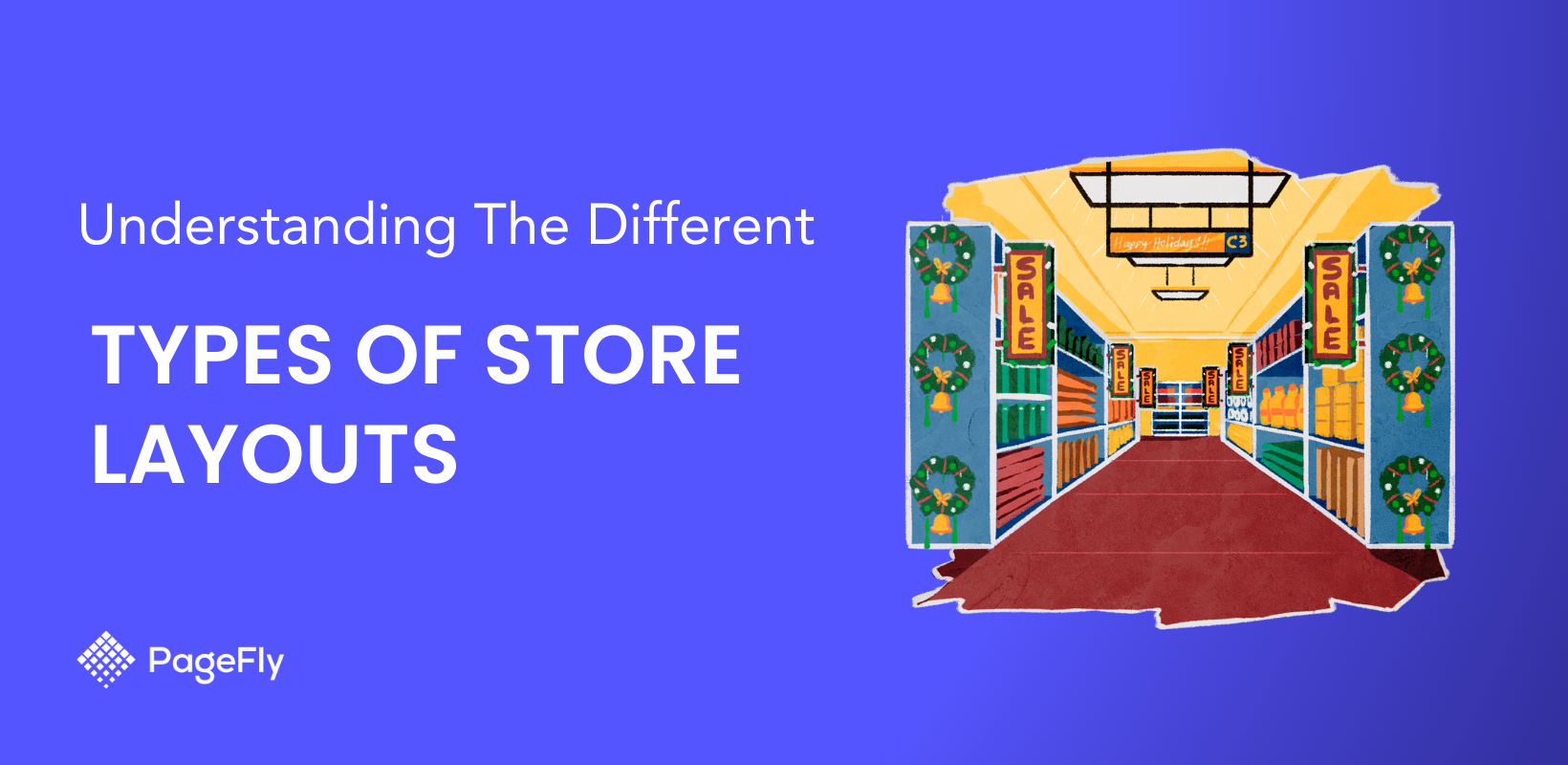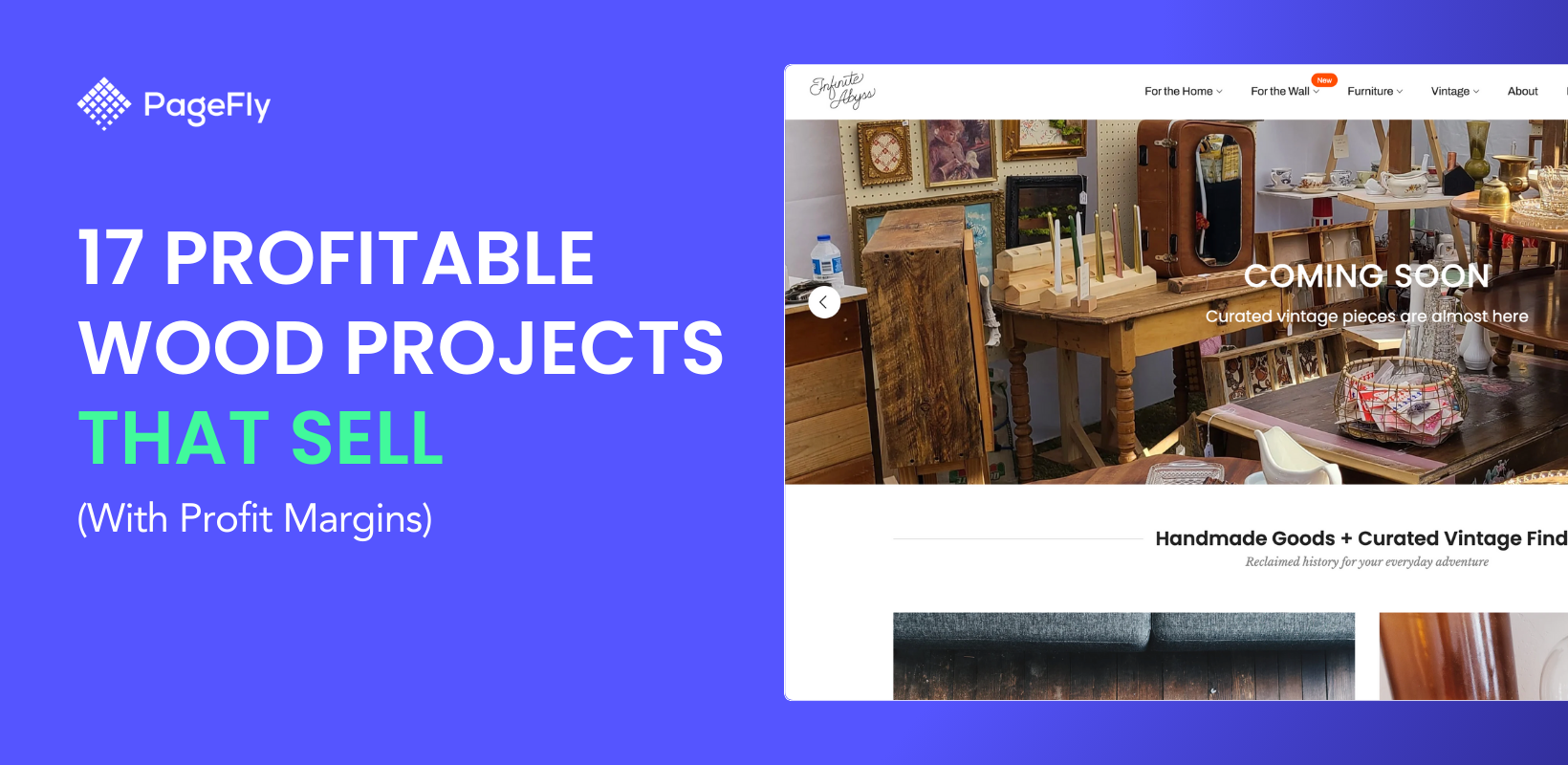Have you thought about the strategy behind a store's layout that can turn it into a wonderland of customers and successful sales? Do you believe that those successes come from types of store layouts?
The displaying and arrangement of products and services play a key role in creating the first impression amongst the shoppers. Retail stores have the power to influence shoppers' behavior, and understanding the different types of store layouts can help shoppers make quicker and better decisions.
If you are a retail store owner, the right store layout can also help improve the overall customer experience. In this blog, we will explore the various types of store layouts and how they can impact the shopping experience. So let's get digging!
Why Is a Retail Store Layout Important?

canva.com
The layout of a retail store might seem like a minor detail at first, but it can make a huge impact on a customer's shopping experience.
A good layout contributes to convenience and can create a welcoming and enjoyable atmosphere for customers, making them feel at ease and comfortable as they browse through the products.
While there are many advantages of having a good layout, the most important ones are as follows:
1. Boosts Retail Sales
A well-planned retail store has the potential to encourage and amplify sales, and this is how it works. When you strategically place products that are of higher demand or have high margins in the high-traffic areas of your store, you are pushing your customers to notice them and eventually add them to their cart.
Read more: Retail Sale Calendar for 2024
2. Efficient Use of Space
A good store layout aids in the maximum use of space in a store. Crowding your store is a big red flag for customers as it will obstruct them from easily finding products. On the other hand, large empty spaces might give an impression of lesser products or a lack of adequate stock. Adopting the right type of layout for your product can not only lead to the best use of space but can also help your staff serve your customers and locate the products they need easily.
3. Improves Brand Recognition
When you see a store with good interiors, displays, and lighting, you are naturally drawn to check them out. This is essential for brand awareness and recognition, especially if you are new to the market.
This could be through multiple branding elements, such as the colors, signage, displays, logo, etc., that cohesively lead to an enriched and memorable shopping experience for your customers.
The layout that best suits your store can differ from the type of product you are selling, the location of your store, the space in your store, and many others. However, using the most effective store layout can bring them all together in harmony to create a retail store that stands out.
Top 9 Types of Store Layouts For Retails You Should Know About

Here are the top retail layouts that you need to know of in 2024:
1. Grid store layout

A grid store layout is one of the most common retail floor layouts that you will see.
In this type of store layout, the store is divided into a series of grids in rectangular or square sections, usually with aisles in straight lines. The space within each aisle is usually wide enough to accommodate shopping carts and trolleys for a hassle-free shopping experience.
The grid layouts come with certain benefits, such as:
- Aids in easy navigation for customers, and the products are arranged in a specific manner for easy finding.
- Allows for maximum use of floor space, and more products can be displayed in an aisle format.
- Allows for flexibility in the arrangement and rearrangement of products by the staff.
A few disadvantages of the grid layout include the following:
- The grid layout can be boring as it only enables a faster shopping experience and not a unique one.
- The layout is most suited for displaying and arranging a large variety of products.
- The grid layout may not work for stores with more complex or specialized products.
This type of store layout is best suited for:
- Supermarkets
- Discount stores
- Drug stores.
- Other businesses with large inventories.
2. Loop Store Layout

A loop store layout (also known as a racetrack layout) has a circular or loop pathway that customers can follow for a convenient shopping experience.
In a loop layout, the items are displayed in a circular or oval shape structure so that the customers move around the store's perimeter and browse through the items. To complement this layout, there will be a central space used for promotional display or as a central seating area to gain the customers' focus.
Some advantages of a racetrack layout are:
- Encourages customers to make impulse decisions as the customer follows the predetermined pathway for shopping.
- Enables easy navigation for customers as the products are displayed in a circular or loop structure.
- Even for a store with a large number of products, the loop layout can help efficiently organize the store structure.
The disadvantages include:
- As the layout concentrates on predetermined pathways, it can lead to congestion in the high-traffic areas of the store.
- Certain types of products may not work well with this layout as it may restrict movement around the store freely.
- Since the layout is followed throughout the store, it can be difficult to choose the right product placement strategy or decide which product should go where.
Best suited for:
- Grocery stores.
- Department stores.
- Large retail stores.
3. Free Flow Store Layout

A free-flow layout design is focused on allowing your customers to move freely throughout the store. This means no definite directions or predetermined pathways are there in this layout.
Even though no predetermined paths or aisles are laid out, the products can be arranged and displayed in a manner that encourages customers to explore them and discover new products.
With the free-flow store layout, you get certain advantages:
- Allows retailers to create visually appealing product displays that attract customers.
- Allows customers to take their time to explore the store, increasing the likelihood of purchases.
- Ideal for stores with a smaller or specialized product range as it creates the illusion of a larger space.
Some disadvantages include the following:
- The lack of any specific structure may confuse some customers, making it difficult for them to find what they are looking for.
- The open layout can make it difficult to control the traffic flow in the store, specifically at or near the focal points or the high-traffic areas.
Best suited for:
- Fashion stores.
- Boutique shops.
- Stores with a limited product range.
4. Spine Store Layout

A spine store layout comes with a main aisle or a "spine" that runs from the front of the store to the back.
This spine or aisle is ideally the widest and most prominent in the store and is mostly used for guiding customers in the store and for easy access to other departments and product categories. Smaller aisles and paths typically branch off the spine aisle for additional shopping areas or departments.
Here are a few of the advantages of the spine layout:
- Easy for customers to navigate through the store and find what they are looking for.
- Ideal for stores with a large product range, allowing for effective product placement.
Disadvantages include:
- Works best in larger stores than in small ones due to the requirement for big space.
- The central aisle can become congested and crowded in high-traffic areas of the store.
Best suited for:
- Supermarkets.
- Hardware stores.
- Stores with a large product range.
5. Angular Store Layout

An angular store layout is simply a variation of the spine store layout. Instead of having a spine aisle, there are multiple aisles arranged at an angle to create a more interesting shopping experience.
In order to achieve this, walls, fixtures, and displays are arranged at various angles rather than the traditional straight lines or right angles to create a dynamic space. This amplifies the store's looks encouraging prospective customers to explore the store and the products to make a purchase.
Some of the advantages of adopting the angular store layout include:
- The angled aisles create a more unique and creative shopping experience for customers.
- The angular store layout allows retailers to maximize their available space, even with limited products.
Disadvantages are:
- The angled aisles can create confusion amongst customers, especially while navigating, leading to more difficulty in finding out what they are looking for.
Best suited for:
- Home improvement stores.
- Fashion and lifestyle stores.
- Electronics stores.
6. Boutique Store Layout

pinterest.com
A boutique store layout is similar to a free-flow store layout that you commonly see in smaller stores. This layout doesn't follow a specific structure and is designed in a way that the products are displayed and arranged aesthetically for a warm and inviting shopping experience.
Some advantages include:
- A boutique store layout encourages customers to explore the store due to its pleasing aesthetics.
- The open layout allows retailer store owners to create creative product displays that attract customers.
- The boutique store layout is ideal for smaller stores as it creates the illusion of a larger space.
Some disadvantages of a boutique store layout are:
- This layout won't work for stores with a large product range as it may lead to cluttered displays.
- The boutique store layout may not appeal to all customers, as some may prefer a more structured shopping experience.
Best suited for:
- Small fashion stores.
- Independent boutiques.
- Specialty stores.
7. Diagonal Store Layout

A diagonal store layout features aisles arranged diagonally throughout the store. It creates an open and more inviting space by breaking the monotony of straight lines while keeping customers interested. This kind of layout is used by modern stores.
The advantages of this layout are:
- The diagonal aisles in this layout create a more interesting shopping experience for customers.
- The diagonal layout is ideal for stores with a large product range for effective product
placement.
Disadvantages include:
- The diagonal aisles could lead to confusion amongst some customers, making it difficult to find what they are looking for.
- Organizing products in this layout could be difficult.
Best suited for:
- Department stores.
- Fashion and lifestyle stores.
- Grocery stores.
- Large retail stores with a diverse range of products.
8. Geometric Store Layout

A geometric store layout features a variety of shapes and angles throughout the store, creating an interesting and unique shopping experience. The placement of products and other elements in the store is in specific angles or shapes. It aids in the easier finding of products they are looking for.
The advantages of a geometric store layout include:
- The unique patterns and angles create a unique shopping experience for customers.
- This type of store layout allows you to display and showcase your product creatively.
- It works well for stores with a small to medium product range, allowing for effective product placement.
Some of the disadvantages of this layout are:
- The unique shapes and patterns may confuse some customers, making it difficult for them to find what they are looking for.
- The geometric store layout may not be suitable for stores with a large product range as displaying them in different shapes and angles could lead to the cluttering of displays.
Best suited for:
- Fashion and apparel stores.
- Boutiques.
- Specialty stores.
9. Hybrid Store Layout

A hybrid store layout is a retail store design that combines two or more store layouts or multiple layout elements to create a unique and personalized shopping experience for customers.
The hybrid store layout is most often used by retailers who want to provide a one-of-a-kind experience within their stores for the customers or reflect their brand identity distinctively.
A few advantages:
- The hybrid store layout enables retailers to create a unique shopping experience through various elements.
- Combining different layouts allows for creative product displays that quickly gain customers' attention.
- The hybrid store layout is ideal for stores with a large product range due to the large floor space.
Disadvantages include:
- Creating a hybrid store layout or combining multiple layouts can be challenging and requires careful planning and execution.
- The hybrid store layout may not be suitable for smaller stores, as it requires a lot of space.
Best suited for:
- Large department stores.
- Grocery stores with a diverse product range.
- Large retail stores.
How to Plan the Perfect Store Layout
In order to implement any store layout efficiently, there are a few things you should keep in mind, and they are as follows:
Plan Your Store's Traffic Flow
Determining customer traffic flow in your retail store could be the first step.
This involves understanding how the customers would move through your store, high-traffic areas, and how they navigate through the space. Also ensure to provide a decompression point at the entrance of the store for customers to acclimate.
Create Focal Points and Eye-catching Displays
Capturing your customers' attention is very important for a successful sale to happen. You could use different focal points such as eye-catching displays, feature walls, lighting etc., at different areas in your store to draw your customers' attention, nudging them to explore more.
Plan for Sufficient Aisle Width and Product Spacing
Ensuring your customers have enough space to move around while browsing and shopping are critical in any retail store.
Sufficient aisle width for moving around with shopping carts and product spacing for easy identification of items is needed for customers to shop without the feeling of being cramped or crowded.
Consider Customer Comfort and Convenience
Customer comfort and convenience should be a top priority when planning your store layout. Ensuring the store is clean, well-lit, and properly ventilated, with comfortable seating areas and restrooms for customers, are essential contributors to a comfortable shopping journey.
Ensure Proper Lighting
Good lighting creates a warm, welcoming feel for the customers.
This could be through the use of natural and artificial lighting while ensuring the products are well-lit and clearly seen. While using any artificial light, it is important to choose one that enhances the appearance of the products and not be harsh on the eyes.
Consider the Checkout Process
Another important aspect to consider while planning your store layout is your checkout process and the placement of the cash counter. The checkout area should be visible and easily accessible to all the customers from the major sections or areas in the store.
Furthermore, to ensure a smooth checkout process, it's important to choose an efficient point of sale (POS) system, such as the Shopify POS. This way, you can avoid any clutter or crowd at the checkout areas and ensure transactions are processed quickly.
Also, check out this video on how to design the perfect retail store:
Real-life Examples of Different Types of Store Layouts
Here’s a sneak peek at a few brand retail stores that have brought different types of store layouts into life:
Abercrombie & Fitch

vmsd.com
Abercrombie & Fitch is a popular American clothing brand that sells casual clothing for men, women, and kids.
The brand recently introduced a getaway-theme design for two stores that prioritizes omnichannel shopping. This design is laid out in a free-flow manner to enable movement and access to multiple sections in the store easily.
Metropolitan Market

vmsd.com
The Metropolitan Market is a chain of upscale grocery stores located in the Washington metropolitan area.
The Metropolitan Market in Gig Harbor, Washington, features a grid-style layout, where all products are arranged categorically and in rectangular grids with ample space between each aisle for easy shopping.
Buldogue Verde

behance.net
Buldogue Verde is a pet center in Brazil that sells pet supplies, grooming, and veterinary care. The store has adopted a hybrid or mixed store layout to display various pet products in an eye-catching manner. Furthermore, the contrasting colors of the products give a vibrant look throughout the store.
Conclusion
There is no doubt that retail store layouts play a crucial role in shaping the overall shopping experience for customers. By understanding the different types of store layouts, you can create a space that optimizes different aspects of a customer's journey to ensure a trouble-free experience.
Remember, each type of store layout has the power to influence your customers and create a positive and memorable time while shopping at your store. So choose a layout that helps you reach your business goals easily.









![14 Profitable Small Food Business Ideas for 2025 [Real Numbers]](http://pagefly.io/cdn/shop/articles/1_58b587d2-13db-4aa6-8c19-e40f5c88d3eb.jpg?v=1758255771&width=4460)
![Art Business Names: 350+ Ideas + Free Generator [2025 Updated]](http://pagefly.io/cdn/shop/articles/art_business_name_e94a54e9-d325-4ba3-94ab-7b4297952312.png?v=1760062968&width=1640)







